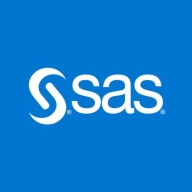

Find out in this report how the two Cloud Data Integration solutions compare in terms of features, pricing, service and support, easy of deployment, and ROI.


AWS Glue is a serverless cloud data integration tool that facilitates the discovery, preparation, movement, and integration of data from multiple sources for machine learning (ML), analytics, and application development. The solution includes additional productivity and data ops tooling for running jobs, implementing business workflows, and authoring.
AWS Glue allows users to connect to more than 70 diverse data sources and manage data in a centralized data catalog. The solution facilitates visual creation, running, and monitoring of extract, transform, and load (ETL) pipelines to load data into users' data lakes. This Amazon product seamlessly integrates with other native applications of the brand and allows users to search and query cataloged data using Amazon EMR, Amazon Athena, and Amazon Redshift Spectrum.
The solution also utilizes application programming interface (API) operations to transform users' data, create runtime logs, store job logic, and create notifications for monitoring job runs. The console of AWS Glue connects all of these services into a managed application, facilitating the monitoring and operational processes. The solution also performs provisioning and management of the resources required to run users' workloads in order to minimize manual work time for organizations.
AWS Glue Features
AWS Glue groups its features into four categories - discover, prepare, integrate, and transform. Within those groups are the following features:
AWS Glue Benefits
AWS Glue offers a wide range of benefits for its users. These benefits include:
Reviews from Real Users
Mustapha A., a cloud data engineer at Jems Groupe, likes AWS Glue because it is a product that is great for serverless data transformations.
Liana I., CEO at Quark Technologies SRL, describes AWS Glue as a highly scalable, reliable, and beneficial pay-as-you-go pricing model.
We monitor all Cloud Data Integration reviews to prevent fraudulent reviews and keep review quality high. We do not post reviews by company employees or direct competitors. We validate each review for authenticity via cross-reference with LinkedIn, and personal follow-up with the reviewer when necessary.